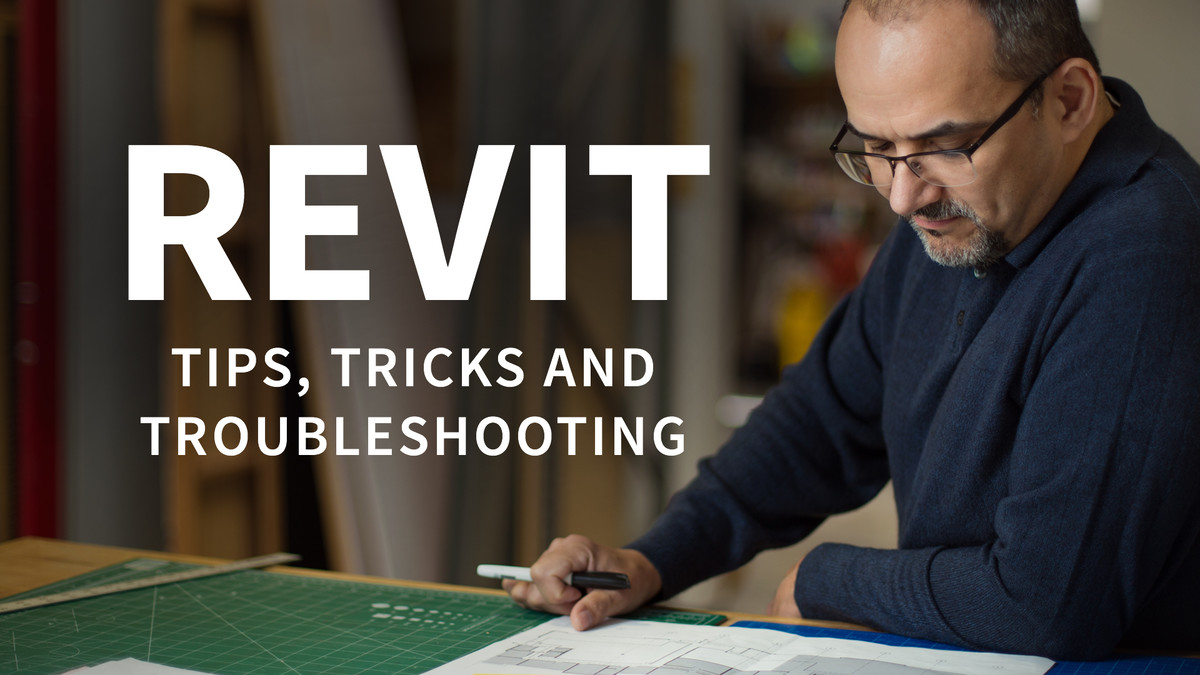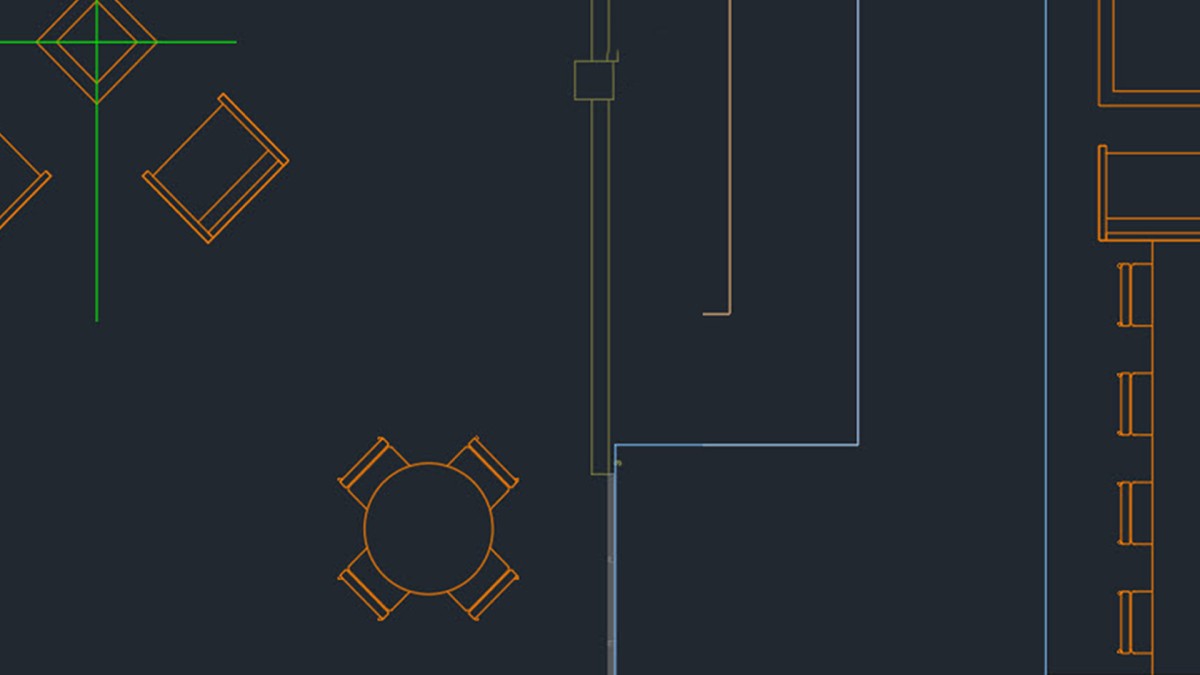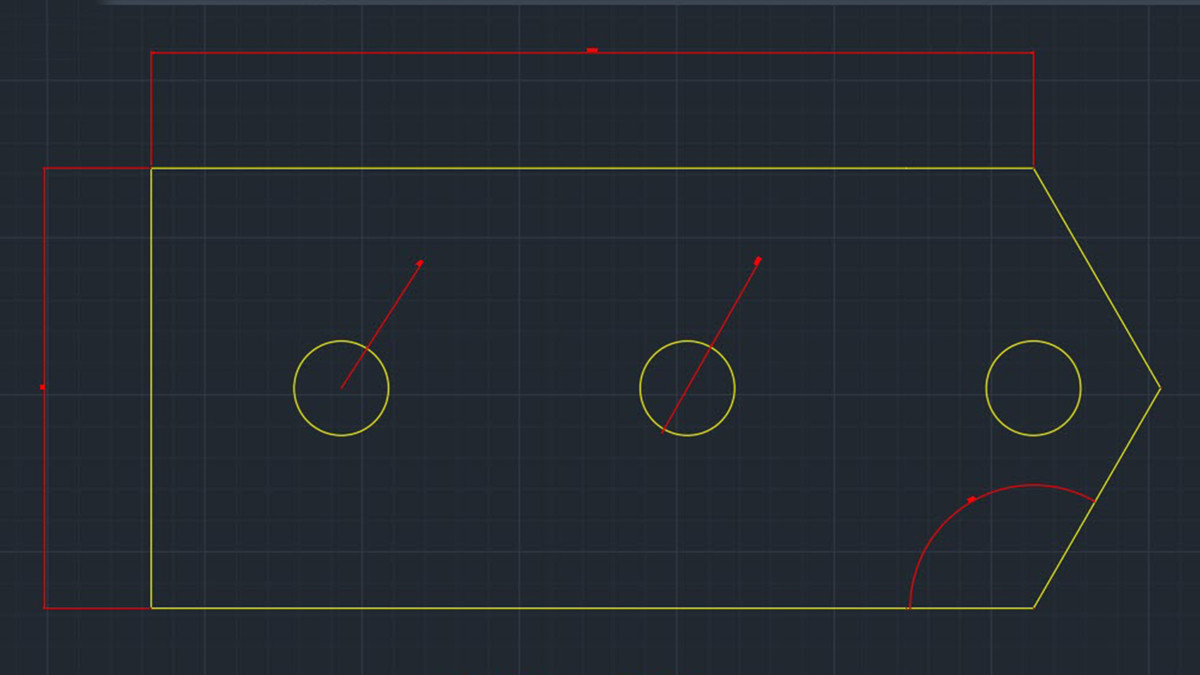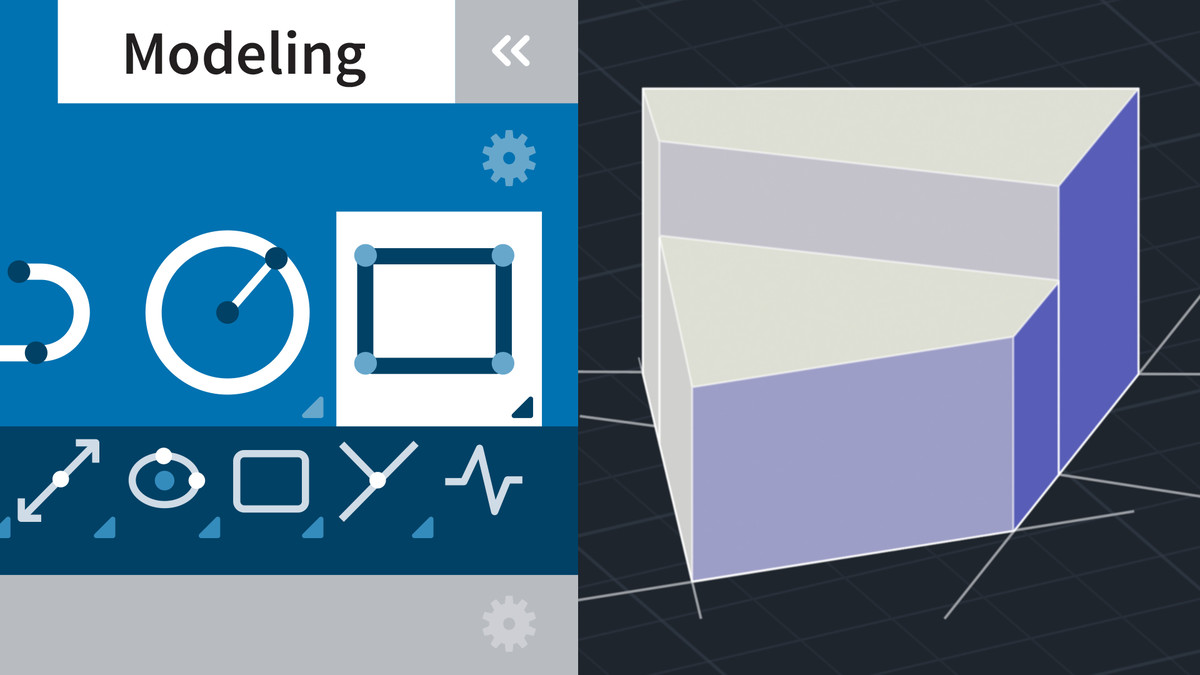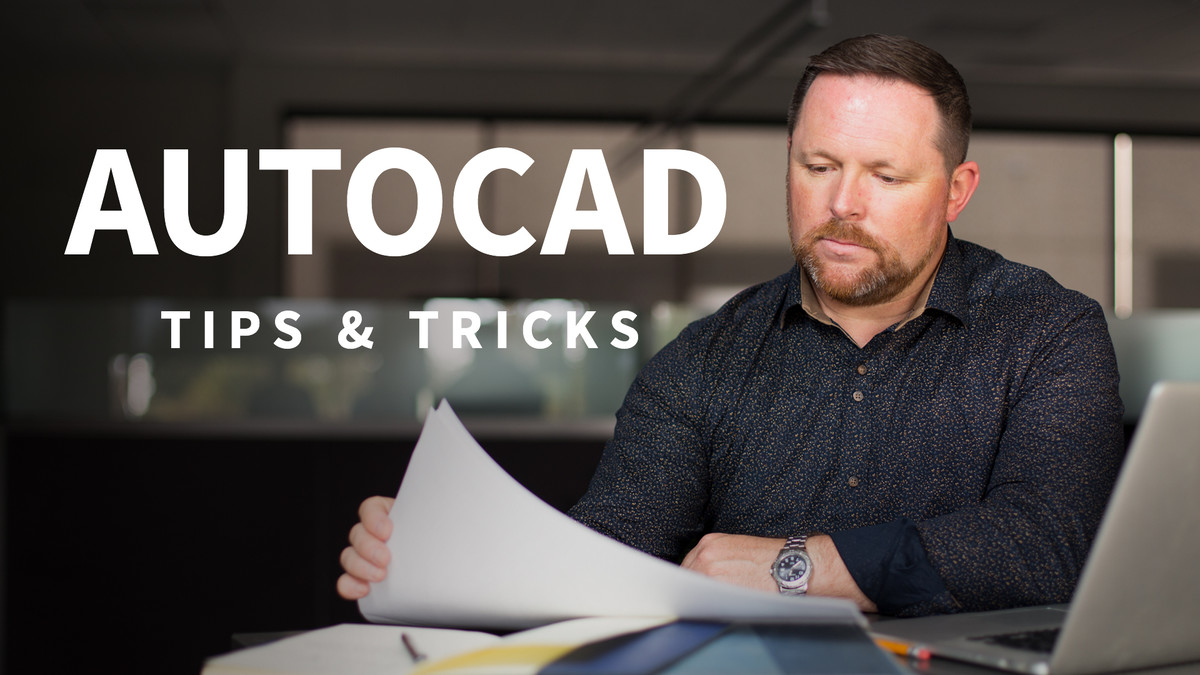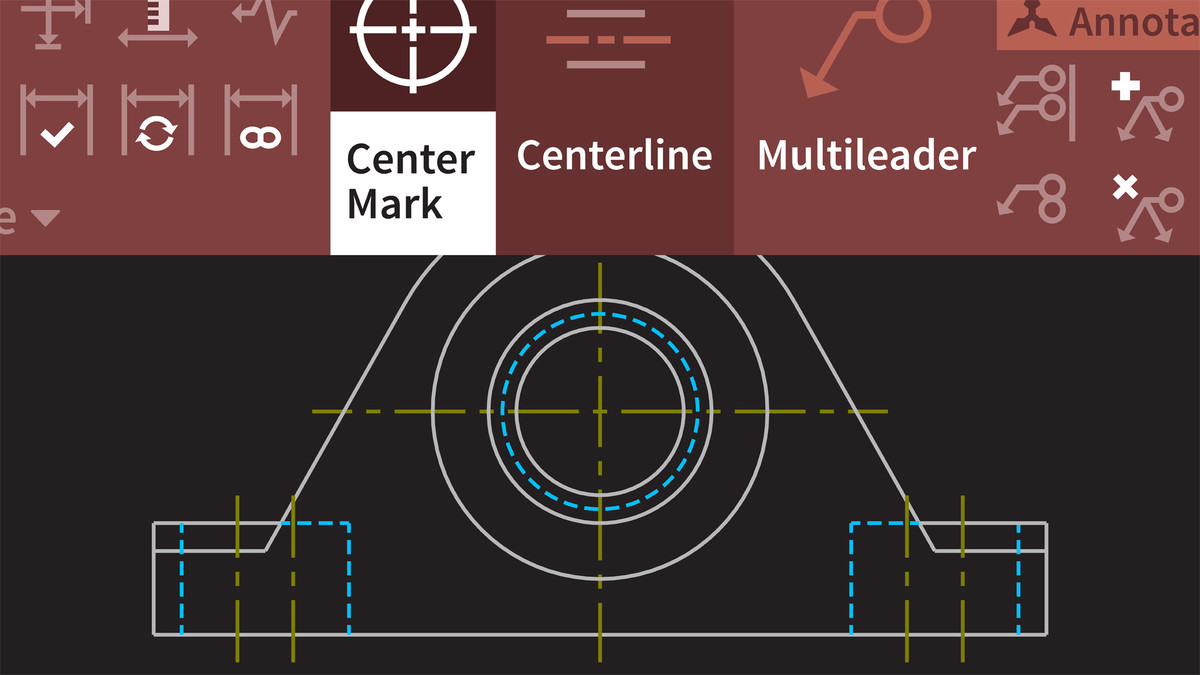2. Previous Episodes
436 - DRAFTING - Using Rotate Reference to tidy text annotation blocks on drawings
()
435 - DRAFTING - Adding arcs and lines within a polyline
()
434 - ANNOTATION - Using enhancements in the Hatch command
()
433 - ANNOTATION - Calculating polyline areas in a table
()
432 - DRAFTING - Developing polylines from existing geometry
()
431 - CONTENT REUSE - Adding attributes to an existing block with no attributes
()
430 - CONTENT REUSE - Utilizing grips to manipulate blocks quickly and easily
()
429 - LAYERS - Using Match Layer to tidy up drawings
()
428 - AutoCAD Web (2026) - Using the FIND command with text objects
()
427 - AutoCAD 2026 - Tracking changes with Activity Insights
()
426 - AutoCAD 2026 - Converting text into blocks
()
425 - AutoCAD 2026 - Converting geometry into blocks
()
424 - AutoCAD 2026 - Cleaning up files created without blocks
()
423 ANNOTATION - Enclosing annotation text with objects [Express Tools]
()
422 CONTENT REUSE - Copying nested objects into the drawing with the NCOPY command
()
421 DRAFTING - Utilizing grips to modify drawing elements (AUTHOR NOTE: mention Options)
()
420 LAYERS - Merging layers in a drawin
()
419 INTERFACE - Using palettes effectively in AutoCAD
()
418 DRAFTING - Using various selection methods with AutoCAD geometry (AUTHOR NOTE: include lasso)
()
417 INTERFACE - Joining viewports in the Model tab
()
416 3D MODELING - Adding simple fillets and chamfers to 3D solids
()
415 3D MODELING - Working with PRESSPULL to develop 3D solids
()
414 3D MODELING - Extruding polylines and regions
()
413 INTERFACE - Freezing layers in layout viewports
()
412 INTERFACE - Working with layer property filters and layer groups
()
411 DRAFTING - Developing centerlines and center marks in your DWG files
()
410 MODELING - Using INTERSECT when solid editing in 3D
()
409 MODELING - Using SUBTRACT when solid editing in 3D
()
408 MODELING - Using UNION when solid editing in 3D
()
407 INTERFACE - Utilizing gizmos when 3D modeling
()
406 INTERFACE - Working with the ViewCube in 3D
()
405 DRAFTING - Using circle types with AutoCAD geometry
()
404 DRAFTING - Adding extra vertices to a polyline
()
403 ANNOTATION - Creating new linetypes in a .LIN file
()
402 INTERFACE - Working with model viewports
()
401 CONTENT REUSE - Using ATTDISP to display block attributes
()
400 CONTENT REUSE - Using CLIP to adjust external reference files (Xrefs)
()
399 LOCATION - Using Esri Maps [AutoCAD 2025]
()
398 LAYOUT - Inserting named views as viewports
()
397 LAYOUT - Working with named views and viewports
()
396 LAYOUT - Freezing layers in the current viewport
()
395 CONTENT REUSE - Creating blocks using nested content
()
394 LAYOUT - Using DVIEW to manage viewports
()
393 DRAFTING - Using wipeouts to manage drawing content
()
392 ANNOTATION - Adding dimension jog lines in dimension annotation
()
391 EXPRESS TOOLS - Adding break lines using the break-line symbol
()
390 INTERFACE - Creating new workspaces with sticky ribbon panels
()
389 CONTENT REUSE - Working with invisible attributes in blocks
()
388 CONTENT REUSE - Creating labels using block attributes
()
387 MODIFY - Using TRIM and EXTEND effectively
()
386 MODIFY - Copying nested objects (NCOPY)
()
385 DRAFTING - Diving deeper into the OFFSET command
()
384 DRAFTING - Using Draw Order in AutoCAD
()
383 UTILITIES - Drawing Properties in AutoCAD
()
382 ANNOTATION - Fixing non-associated dimension annotation with the DIMREASSOCIATE command
()
380 ANNOTATION - Recognizing SHX text in PDF imports
()
381 ANNOTATION - DATAEXTRACTION command in AutoCAD drawings
()
379 CONTENT REUSE - Understanding the Blocks Palette
()
378 ArcGIS - Esri Basemaps in AutoCAD [AutoCAD 2025]
()
377 DRAFTING - HATCH command tools [AutoCAD 2025]
()
376 MANAGEMENT - Activity Insights in AutoCAD
()
375 INTERFACE - Autodesk Assistant [later AutoCAD versions]
()
374 CONTENT REUSE - Smart Blocks for object detection [AutoCAD 2025]
()
373 CONTENT REUSE - Smart Blocks to search and convert [AutoCAD 2025]
()
358 OUTPUT - Creating effective page setups
()
357 DRAFTING - Working with STRETCH and SCALE to edit drawing geometry
()
356 CONTENT REUSE - Creating a simple drawing template (DWT) file
()
355 NAVIGATION - Using Named Views in larger drawings
()
354 ANNOTATION - Working with the DIMBREAK and DIMSPACE tools
()
353 ANNOTATION - Dimension Text Editing and the DIM command
()
352 CONTENT REUSE - Using the block placement tool in AutoCAD 2024
()
351 MARKUP - Working with wipeouts and revision clouds
()
350 CONTENT REUSE - Using the block replacement tool in AutoCAD 2024
()
349 CONTENT REUSE - Using the COUNT command to tabulate the block count in a drawing
()
348 INTERFACE - Using the new tabs in AutoCAD 2024
()
347 PARAMETRIC - Working with geometric and dimensional constraints in drawings
()
346 DIMENSIONS - The difference between dimension associativity, associative dimensions, and annotative dimensioning
()
345 ANNOTATION - Working with multileaders in your drawings
()
344 INTERFACE - Working smarter with the Properties palette
()
343 LAYERS - Working with the layer translator
()
342 ANNOTATION - Working with tools on the Text Ribbon panel
()
341 INTERFACE - Working with display settings in the AutoCAD Options dialog
()
340 ANNOTATION - Creating itemized lists with the TCOUNT command
()
339 CONTENT REUSE - Managing block attributes in your drawings (BATTMAN command)
()
338 CONTENT REUSE - Synchronizing block attributes in your drawings (ATTSYNC command)
()
337 ANNOTATION - Masking text with the AutoCAD Express Tools
()
336 ANNOTATION - Creating effective text labels with Express Tools
()
335 ANNOTATION - Modifying text using the AutoCAD Express Tools
()
334 ANNOTATION - Editing text using the AutoCAD Express Tools
()
333 CONTENT REUSE - Working with the Clipboard in AutoCAD
()
332 PROPERTIES - Working with the Match Properties tool in AutoCAD
()
331 LAYERS - Working with the settings in the Layer Properties Manager
()
330 LAYERS - Working with Property and Group Filters in the Layer Properties Manager
()
329 NAVIGATION - Working with Named Views in AutoCAD
()
328 ACCURACY - Working with 3D Object Snaps when modelling in AutoCAD
()
327 ACCURACY - Using POLAR, OSNAP, and OTRACK for accurate design
()
326 INTERFACE - Updating the status bar from default settings
()
325 ANNOTATION - Calculate areas with polylines, boundaries, and hatches
()
324 ANNOTATION - Adding blocks and formulas to an AutoCAD table
()
323 ANNOTATION - Developing an effective table style for your drawings
()
322 INTERFACE - Working with Model Viewports in 3D
()
321 ANNOTATION - Adding field data to AutoCAD tables
()
320 Output: Batch plotting with the PUBLISH command and setting up a DSD file
()
319 Content reuse: Using the Block Attribute Manager (BATTMAN) with your blocks
()
318 Properties: Calculating simple areas from polylines
()
317 Annotation: Working with the QLEADER command
()
316 Properties: Using object transparency in your drawings to your advantage
()
315 Content reuse: Working with the Group command to reuse drawing content
()
314 Content reuse: Setting up a simple blocks library from the Blocks palette (AutoCAD 2023)
()
313 Interface: Utilizing floating drawing windows (AutoCAD 2023)
()
312 Interface: Using the ribbon floating panels and workspaces in AutoCAD to your advantage
()
311 Annotation: Working with center marks and centerlines
()
310 Annotation: Setting up dimension-style families
()
309 Annotation: Working with dimension-style overrides
()
308 Import: Importing a PDF underlay into AutoCAD
()
307 Import: Importing a PDF into AutoCAD and utilizing the PDF image data
()
306 Layers: Working with Named Views and setting layer snapshots
()
305 3D Design: Using the REGION command, part 2
()
304 3D Design: Using the REGION command, part 1
()
303 References: Distinguishing between Insert and Bind when using External References (XREFs)
()
302 Interface: Working with some of the newer features (AutoCAD 2023)
()
301 Content reuse: Working with the new Count features (AutoCAD 2023)
()
300 Collaboration: Developing a simple revision path using Trace (AutoCAD 2023)
()
299 Markup: Working with the import and markup tools (AutoCAD 2023)
()
298 Collaboration: Using trace management tools (AutoCAD 2023)
()
297 Collaboration: Using the Trace function in the desktop app (AutoCAD 2023)
()
296 Annotation: Working with dimension style families
()
295 Recovery: Making sure you can recover your drawings when things go wrong
()
294 Automation: Using the Action Recorder to automate repetitive tasks in AutoCAD
()
293 Drafting: Working with the Selection Cycling and Hide and Isolate tools in AutoCAD
()
292 Layers: Translating layers in your AutoCAD drawings
()
291 Standards: Working with CAD standards in your AutoCAD designs
()
290 Annotate: Working with regular leaders such as QLEADER, and their associated styles and settings
()
289 Annotate: Working with multileaders, and their associated styles and settings
()
288 Annotate: Working with center marks, centerlines, and their associated settings
()
287 Utilities: Using the Quick Measure and Measure Area tools
()
286 Output: Developing your own transmittal style for eTransmit
()
285 Layout: Joining viewports in the Model tab
()
284 Automation: Using the command macros palette to automate design processes in AutoCAD 2023
()
283 Design reuse: Counting blocks in your drawings
()
282 Design reuse: Reusing blocks with the INSUNITS setting
()
281 Design reuse: Setting up multiunit tool palettes with blocks
()
280 Design reuse: Quick tool palette creation from DesignCenter
()
279 Design reuse: Working with AutoCAD DesignCenter
()
278 Tool palettes: Creating a command tool palette
()
277 Tool palettes: Getting tool palettes out to your team
()
276 Tool palettes: Customizing your tool palettes with a block library drawing
()
275 Tool palettes: Setting up a simple tool palette for your AutoCAD blocks
()
274 Design reuse: Working with the Blocks palette and blocks libraries (AutoCAD 2022)
()
273 Design reuse: Setting up your Blocks palette to use your block libraries (AutoCAD 2022)
()
272 Design reuse: Developing a cloud-based blocks library
()
271 Collaboration: Using the cloud to store your DWG files, using web and mobile folders and Microsoft OneDrive
()
270 3D Modeling: Using PROJECTGEOMETRY in your 3D models
()
269 3D Modeling: Using TABSURF to generate a mesh from a line or a curve
()
268 3D Modeling: Creating 3D primitives
()
267 Drafting: Drafting different drawing views using drafting standards
()
266 3D Modeling: Working with section tools and your 3D model
()
265 Express Tools: Working with the Layout panel in Express Tools
()
264 Interface: Mouse customization and MBUTTONPAN
()
263 Graphics: Working with Windows and GRAPHICSCONFIG
()
262 Interface: Using your tooltips in AutoCAD
()
261 Annotation: Working with the DIMENSION tool in AutoCAD
()
260 Interface: Working with your file tabs
()
259 3D Modeling: Using FLATSHOT to create 2D snapshots of your 3D model in your drawing
()
258 Annotation: Using annotative text labels in the Model tab
()
257 Measure: Tabulating polyline areas using the FIELD command
()
256 Measure: Using the Measure tools in AutoCAD to calculate room areas
()
255 Modify: Using the STRETCH command to move openings in your AutoCAD drawings
()
254 Content: Using the Blocks palette to centralize your block libraries
()
253 Modify: Updating associative arrays in your AutoCAD drawings
()
252 Collaborate: Creating shared views in your AutoCAD drawings
()
251 Collaborate: Sending drawings to Autodesk Docs (AutoCAD 2022 only)
()
250 Collaborate: Sharing your current drawing to the AutoCAD web app (AutoCAD 2022 only)
()
249 Interface: Working with the floating drawing tabs in AutoCAD (AutoCAD 2022 only)
()
248 Collaborate: Using the TRACE function in AutoCAD for markup and review (AutoCAD 2022 only)
()
247 Content: Using the COUNT command to calculate the number of blocks in your drawings (AutoCAD 2022 only)
()
246 Utilities: Using Quick Select to work smarter and faster in your AutoCAD drawings
()
245 Utilities: Using MEASURE to calculate distances and areas in your drawings
()
244 Customization: Setting up the AutoCAD Status Bar to suit your drafting needs
()
243 MANAGEMENT - Working with and optimizing your AutoCAD options
()
242 Interface: Creating your own AutoCAD workspace with sticky panels
()
241 Interface: Working with the Quick Access Toolbar (QAT) and workspaces
()
240 Express tools: Replacing blocks in your AutoCAD drawings
()
239 Mobile: Saving your drawings to the web and mobile apps
()
238 History: Using DWG History to maintain a DWG audit trail
()
237 Markup: Working with the REVCLOUD command in your drawings
()
236 Markup: Working with the WIPEOUT command in your drawings
()
235 Project: Working with Design Review to check and review design intent
()
234 Project: Working with eTRANSMIT to publish project drawings
()
233 Project: Working with PUBLISH to batch plot drawings
()
232 Project: Working with page setups to plot drawings
()
231 Project: Setting up page setups for your title block
()
230 Project: Working with annotative dimensioning
()
229 Project: Adding annotation styles for text and dimensioning
()
228 Project: Working with 3D views and visual styles
()
227 Project: Developing a title block with four viewports
()
226 Project: Using EXTRUDE and PRESSPULL in 3D to convert a 2D region to a 3D solid
()
225 Project: Using 3D Boolean functions to tidy up AutoCAD regions
()
224 Project: Converting a 2D gasket plate to AutoCAD regions
()
223 Project: Developing a simple gasket plate with polylines and circles in 2D
()
222 Interface: Using your file tabs in AutoCAD
()
221 3D Design: Using Boolean functions In 3D AutoCAD
()
220 3D Design: Generating 3D solids using regions, Presspull, and Extrude
()
219 3D Design: Setting up a camera view and adding it to a layout titleblock
()
218 3D Design: Using visual styles to enhance your 3D model views
()
217 3D Design: Applying materials to surfaces using the Materials Browser to enhance your renders
()
216 3D Design: Generating a section plane and creating section views
()
215 Interface: Using sticky panels and saving workspaces
()
214 Catalogs: AutoCAD Electrical, using the Catalog Browser
()
213 Web App: Opening your web app DWG file in your AutoCAD desktop
()
212 Customization: Working with the AutoCAD cursor and UCS
()
211 Annotation: Using fields to occupy table data cells
()
210 Output: Setting up a simple titleblock with PDF page setup and viewports
()
Output: Using the PUBLISH command to print and plot multiple drawings and saving the settings for future output
()
Management: Using the DWGCONVERT command to change the DWG file format of your drawings
()
Properties: Using the LTSCALE value in your object properties to enhance object display in your layout tabs
()
Annotation: Working with the MLEADER command to develop and use annotative multileaders in your drawings
()
Annotation: Using the DIMBREAK and DIMSPACE commands in your AutoCAD drawings
()
Annotation: Working with annotative object scales to add annotative scales to dimension objects in your drawings
()
Annotation: Using viewport scales to set your annotative scaling in your drawing
()
Layers: Using layer states to enhance your AutoCAD drawings
()
Annotation: Working with subfamilies in your dimension styles in AutoCAD
()
Annotation: Working with some of the other useful tools in the Dimensions panel
()
Annotation: Working with annotative dimensions in your AutoCAD drawings
()
Annotation: Working with associative dimensions in your AutoCAD drawings
()
Annotation: Working with the DIMASSOC system variable allows for different types of dimension annotation
()
Management: Working and saving back with older DWG file formats (AutoCAD 2020)
()
Collaboration: DWG Compare, working with snapshots (AutoCAD 2020)
()
External references: XREF Compare function (AutoCAD 2021)
()
Blocks: The new Blocks Libraries function (AutoCAD 2021)
()
Blocks: Syncing AutoCAD blocks in the Blocks Recent folder location (AutoCAD 2021), part 2
()
Blocks: Syncing AutoCAD blocks in the Blocks palette (AutoCAD 2021), part 1
()
System: The new RTREGENAUTO system variable (AutoCAD 2021)
()
Management: Managing DWG file history using DWG History support (subscription only)
()
Measure geometry: Working with the new Quick Measure option (only AutoCAD 2021)
()
Modify: Break objects at a single point (AutoCAD 2021)
()
Annotation: REVCLOUD enhancements (AutoCAD 2021)
()
Modify: Streamlined Trim and Extend (AutoCAD 2021)
()
Annotation: Using the DIMENSION command for quick annotation
()
Annotation: Working with fields to add useful data to AutoCAD tables
()
Blocks: Using the Block Attribute Manager (BATTMAN); no cape needed!
()
Blocks palette: Working with blocks from other drawings
()
Blocks palette: Working with blocks from recent drawings
()
Blocks palette: Working with blocks in a current drawing
()
Layout: Adding named views to your layouts in your drawings
()
Layout: Working with different types of viewports in your layouts
()
Layout: Working with the Styles and Standards panel in the layout
()
Layout: Updating views created in the layout with the Update panel tools
()
Layout: Working with the Modify View tools in the Layout tab
()
Layout: Working with the Create View tools in the Layout tab
()
Layout: Using third angle projection in AutoCAD
()
Drafting techniques: Using first angle projection in AutoCAD
()
Drafting techniques: Working with orthographic projection in AutoCAD
()
Blocks: Using DesignCenter and palettes for blocks in AutoCAD
()
Interface: Using the scale list In viewports and annotation
()
Express Tools: Using The SUPERHATCH command from the Express Tools tab
()
Layers: Using the LAYWALK command in AutoCAD
()
Layers: Using the LAYTRANS command in AutoCAD
()
Drafting: Working with OFFSET and its command options
()
Selection: Working with GRIPS and grip editing in AutoCAD
()
Selection: Using selection settings in AutoCAD
()
Interface: Using the Visual Effect Settings dialog in AutoCAD
()
Drafting: Using the REGION command to your advantage
()
Drafting: Working with the snap overrides in AutoCAD
()
Interface: Using the QUICKCALC command in AutoCAD
()
Drafting: Running object snaps (OSNAPs)
()
Human interface: Customizing the right-hand mouse button
()
Human interface: Using MBUTTONPAN, ZOOMWHEEL, and ZOOMFACTOR
()
Parametric: Using the Parameters Manager
()
Annotation: Reassociating your dimensions
()
Annotation: Spell-checking your drawings
()
Interface: Working with the Interface panel
()
Layout: Freezing layers in the current viewport
()
Design Reuse: Using PDFs in your drawings
()
Web: Saving a drawing to use in the AutoCAD web app
()
Annotation: Generating an annotative dimension style
()
Layout: Adding named views to a layout
()
Drafting: Aligning objects in 2D
()
Drafting: Working with regions
()
Drafting: Enjoying your donuts
()
Drafting: The advantages of using polylines
()
Design reuse: Working with insertion options in the BLOCK command
()
Use the enhanced PURGE command in AutoCAD 2020
()
Scale the 2D views generated in the layout tab
()
Generate 2D views from a 3D object in the layout tab
()
Use Quick Select for easy object selection in drawings
()
Use the calculator provided in AutoCAD
()
Use the Parameters Manager to manage constraints in a drawing
()
Work with dimensional constraints in an AutoCAD drawing
()
Work with geometric constraints in an AutoCAD drawing
()
Fast data response with the new Quick Measure tool in AutoCAD 2020
()
Use the QDIM command for quicker dimensioning
()
Use DWG Compare in AutoCAD 2020
()
Work with the WBLOCK command in AutoCAD 2020
()
Use the new blocks palette in AutoCAD 2020
()
Develop PDF page setups using the Page Setup Manager
()
Show and hide constraints in your AutoCAD drawings
()
Add parameters and expressions to dimensional constraints
()
Convert dimensions to dimensional constraints in your drawings
()
Work with dimensional constraints in your drawings
()
Work with constraints in your drawings
()
Use auto constrain and add and remove other constraints
()
Use the LAYISO and LAYUNISO commands in your drawings
()
Use layer states to highlight objects in drawings
()
Using the drawing utilities provided by AutoCAD in a DWG file
()
A brief introduction to using DWG files in AutoCAD web app
()
Taking a DWG file in to AutoCAD web app
()
Using the Save to Web & Mobile command
()
Using the Merge Layout command to merge layout viewports
()
Matching up layout viewports with the Synchronize Viewports command
()
Aligning your layout viewports with the Align Space command
()
Enclosing text inside objects with the Enclose in Object command
()
Using Auto Number with AutoCAD text objects
()
Using the Move/Copy/Rotate command in Express Tools
()
Using the Modify Text drop-down menu tools
()
Converting text to MTEXT
()
Using Arc Aligned
()
Using the Autodesk Viewer
()
Using shared views in AutoCAD
()
Working with annotative dimensions in your AutoCAD drawings
()
Setting up an effective IMPERIAL dimension style
()
Setting up an effective METRIC dimension style
()
Working with the Layer States Manager
()
Using the DIMREASSOCIATE command
()
Exporting your DWG files to DWF and PDF file formats
()
Working with the Page Setup Manager in AutoCAD
()
Using a DWS file to check standards in your AutoCAD drawings
()
Using named views to navigate your AutoCAD drawings
()
Setting up model space viewports with a 3D model
()
Saving your files to AutoCAD web and AutoCAD mobile
()
Working with your Autodesk Account
()
Using the DWG Compare command
()
Interface: Editing path arrays
()
Interface: Using edge extensions
()
Interface: Automatic dimensioning
()
Plotting: Simple batch plotting
()
Content: Editing block attributes
()
Content: Invisible block attributes
()
Content: Layer and panel tools
()
Content: Calculating areas
()
Management: Working with AutoCAD options
()
Content: Creating DWG Compare tables
()
Content: Working with DWG Compare results
()
Content: Using DWG Compare
()
Interface: Editing rectangular arrays
()
Interface: Editing Polar Arrays
()
Using the SPELL command to check and review AutoCAD designs
()
Using Quick Select to find and select objects quickly
()
Working with the Enhanced Attribute Editor to enhance block attributes
()
Creating blocks with attributes for design content
()
Using the Markup Set Manager in AutoCAD with Autodesk Design Review
()
Creating tool palettes from drawings in AutoCAD DesignCenter
()
Working with the FIELD command to display object data
()
Working with the ARRAYPATH command
()
Using the ETRANSMIT command
()
Using the PUBLISH command
()
Working with the Named Views panel
()
Working with AutoCAD centerlines and adjusting their settings
()
Finding and replacing reference files
()
Using AutoCAD tools to fix broken reference paths
()
Working with the interface panel and display options
()
Using the Sheet Set Manager to develop a sheet set
()
Changing the INSUNITS variable when working with blocks
()
Adding blocks to a tool palette for design reuse
()
Using the layer controls in the Layers panel in the ribbon
()
Developing and extruding a simple region in a 3D solid
()
Enclosing text with an object such as a circle, slot, or rectangle
()
Converting text to MTEXT with the TXT2MTXT command
()
Working with the PDFSHXTEXT command
()
Working with the 3D graphics support on the AutoCAD 2018.1 update
()
Demonstrating the hi-res monitor support in AutoCAD 2018.1
()
Working with the new AutoCAD 2018.1 view and viewport commands
()
Working with the new AutoCAD 2018.1 XREF commands
()
Adding your own AutoCAD workspace
()
Customizing the Quick Access Toolbar
()
Using the STARTUP variable
()
Setting up a metric multileader style
()
Setting up a metric dimension style
()
Setting up a metric text style
()
Using the OFFSET command
()
Working with layer settings
()
Rotating with Copy and Reference
()
Working with BYLAYER
()
Working with batch plotting
()
Creating named views
()
Creating a simple block palette
()
Working with insertion scales
()
Using DesignCenter
()
Creating a dimension jog line
()
Using the DIMSPACE command
()
Using the DIMBREAK command
()
Using PDFSHXTEXT in AutoCAD
()
Using SELECTIONOFFSCREEN in AutoCAD
()
Using LTGAPSELECTION in AutoCAD
()
Using the Group Manager to set up groups in AutoCAD
()
Using Hide and Isolate to draw effectively
()
Using transparency in AutoCAD drawings
()
Using Match Properties effectively
()
Using visual styles to develop 3D views
()
Using EXTRUDE to create 3D solids
()
Creating a region from 2D objects
()
Creating different revision cloud types
()
Using the DIVIDE command
()
Using the MEASURE command
()
Setting multiple point objects
()
Setting AutoCAD point styles
()
Using layer settings for effective layer control
()
Using Quick Select to speed up the selection process
()
Using the AutoCAD calculator to your advantage
()
Utilizing named views to manage the Model tab
()
Using markup tools to create a revision schedule
()
Using the QAT to set up a customized workspace
()
Using DIMREASSOCIATE to maintain dimension accuracy
()
Using the new centerline commands
()
Using layer properties for layer management
()
Using measure to obtain accurate drawing information
()
Using DesignCenter with AutoCAD blocks
()
Using WBLOCK to edit and replace blocks
()
Freezing layers in the current viewport
()
Using FIELDS in MTEXT
()
Using ARRAY and ARRAYCLASSIC
()

